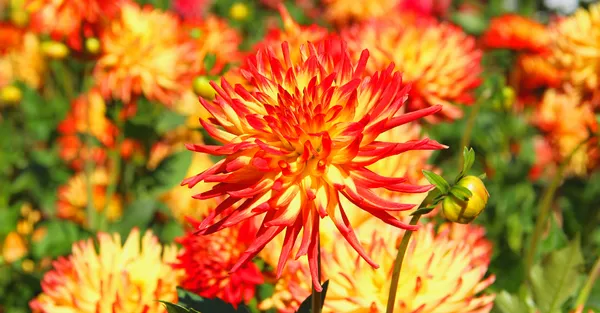Birth flowers are a captivating tradition that associates specific flowers with each month of the year. These blooms hold unique symbolism and significance, offering insights into an individual’s personality traits and characteristics based on their birth month. In the case of November, the birth flower is the enchanting chrysanthemum. In this article, we delve into the world of the November birth flower, exploring its history, meanings, cultural significance, and more.
The Chrysanthemum: A November Delight
Chrysanthemums, commonly known as mums, are vibrant and versatile flowers that grace gardens, bouquets, and floral arrangements across the world. They are the focal point of November’s birth flower tradition. With their intricate petals and diverse colors, chrysanthemums are a sight to behold.
Historical Roots and Cultural Significance
1. Origins: The chrysanthemum’s history dates back to ancient China, where it held immense cultural significance. Revered as a symbol of nobility and longevity, chrysanthemums were often associated with the elite and were prominently featured in art, poetry, and even Chinese herbal medicine.
2. Japan’s Emblem: In Japan, the chrysanthemum was adopted as the imperial crest, known as the “Chrysanthemum Throne.” It remains an integral part of Japanese culture and is celebrated during the annual Festival of Happiness, also known as the “Chrysanthemum Festival.”
3. Western Symbolism: As the chrysanthemum’s popularity spread to the Western world, it began to symbolize different values. In many cultures, these flowers are associated with love, joy, and friendship. Additionally, their myriad of colors also conveys unique meanings. For instance, red chrysanthemums symbolize love and deep passion, while yellow ones represent unrequited love or friendship.
Personality Traits and Characteristics
1. Variety of Meanings: Like birthstones, birth flowers are thought to reflect certain personality traits of individuals born in that month. Those born in November under the chrysanthemum’s influence are believed to possess qualities such as loyalty, friendship, and an innate sense of responsibility. Just as the chrysanthemum blooms in a variety of colors, these individuals are thought to exhibit a diverse range of characteristics.
2. Friendship and Loyalty: Chrysanthemums’ association with friendship and loyalty makes them a perfect gift for loved ones born in November. These individuals tend to form deep, lasting bonds and are reliable friends who offer unwavering support.
3. Adaptability and Change: The chrysanthemum’s ability to flourish in various environments, along with its seasonal blooming, symbolizes adaptability and embracing change. People born in November are thought to possess a strong sense of resilience and the capacity to navigate life’s transitions with grace.
Cultivating Chrysanthemums
1. Gardening Pleasures: Chrysanthemums are a popular choice among gardeners due to their vibrant display of colors and shapes. They can be grown in gardens or containers, offering a burst of autumnal hues.
2. Caring Tips: To cultivate healthy chrysanthemums, it’s essential to provide them with proper care. They thrive in well-drained soil and require regular watering. Pruning is necessary to encourage bushier growth and more blooms. Depending on the variety, chrysanthemums can be annuals or perennials, adding to their appeal for gardening enthusiasts.
Chrysanthemums Beyond Birthdays
1. Cultural Celebrations: Chrysanthemums’ significance extends beyond the realm of birth flowers. They are commonly featured in various cultural celebrations, including weddings, funerals, and religious ceremonies, due to their diverse meanings.
2. Medicinal Uses: In traditional medicine, chrysanthemums have been used for their potential health benefits. Their extracts are believed to have anti-inflammatory and calming properties, making them a popular ingredient in herbal teas and remedies.
3. Artistic Inspiration: The chrysanthemum’s intricate and captivating appearance has inspired artists throughout history. From ancient Chinese paintings to contemporary floral designs, these flowers continue to be a muse for creative expression.
Conclusion
The chrysanthemum, November’s birth flower, is a captivating bloom steeped in history, culture, and symbolism. From its origins in ancient China to its role in Western and Japanese traditions, the chrysanthemum holds a special place in the hearts of many. Its versatility in colors and meanings makes it a flower of choice for various occasions, while its association with loyalty, friendship, and adaptability offers insight into the personalities of those born under its influence. Whether adorning gardens, celebrations, or artistic creations, chrysanthemums continue to enchant and inspire, proving that their beauty and significance transcend time and borders.


